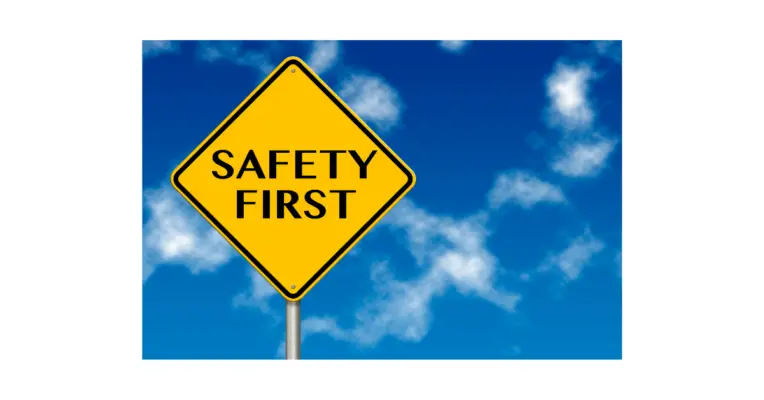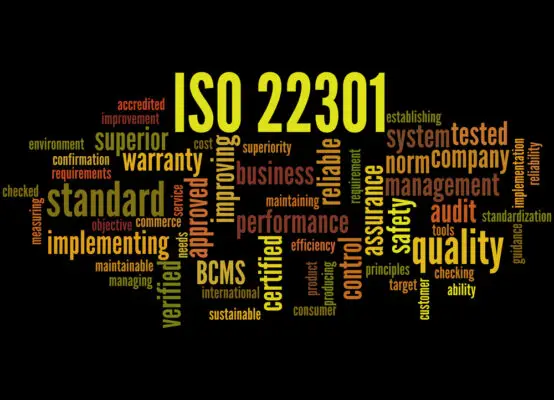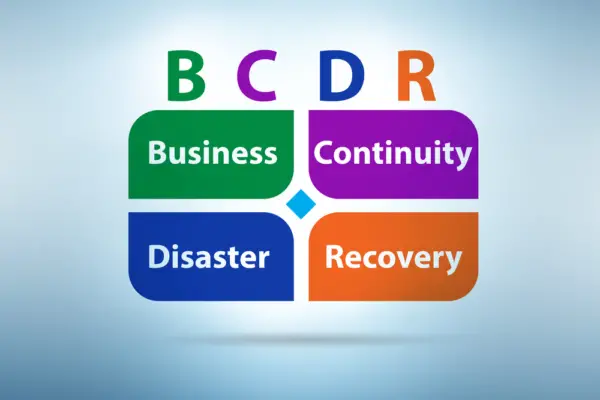Are you aware of the difference between a hazard and a risk? It may seem like a minor distinction, but understanding the difference between the two can be crucial in avoiding potential dangers and ensuring safety in various aspects of life.
It is important to recognize hazards and assess their associated risks before taking action. Hazards refer to potential sources of harm, such as a slippery floor or a sharp object. They are present in our everyday lives and can range from minor to severe. Identifying and understanding these hazards is essential in taking necessary precautions to prevent accidents and injuries.
On the other hand, risks are the chances of harm occurring from a particular hazard. In this article, we will delve into the details of hazards and risks and how understanding the difference between the two can help you make safer choices in your daily life.

Importance of understanding the difference between a hazard and a risk
Understanding the difference between a hazard and a risk is essential in any situation where safety is a concern. A hazard is something that has the potential to cause harm, while a risk is the likelihood that harm will occur.
For example, driving a car is a hazard because there’s always the potential for an accident to occur. However, the risk of an accident happening can be reduced by following traffic laws, wearing a seatbelt, and avoiding distractions while driving.
In the workplace, it’s important to identify hazards and assess the associated risks to ensure the safety of employees. Steps to eliminate or control hazards and reduce the likelihood of harm occurring can include providing safety training, implementing safety protocols, and providing personal protective equipment.
Understanding Hazards
The hazards can be physical, chemical, biological, or psychological. Physical hazards include things like sharp objects, heights, and extreme temperatures. Chemical hazards include substances that are toxic, flammable, or explosive.
Biological hazards include viruses, bacteria, and other microorganisms that can cause diseases. Psychological hazards include things like stress, bullying, and harassment.
It’s important to identify hazards so that we can take steps to prevent them from causing harm. This can include things like using safety equipment, following safety procedures and avoiding dangerous situations.
For example, if you work in a laboratory, you might need to wear a lab coat and goggles to protect yourself from chemical hazards. If you work on a construction site, wear a hard hat and safety boots to protect yourself from physical hazards.
Understanding hazards is an important part of risk assessment. Risk is the likelihood of harm if a hazard is not controlled.
This can help us to stay safe and avoid accidents or injuries. So, take the time to identify hazards and assess their associated risks. It could save your life.
Types of Hazards
Physical hazards can be caused by anything from poor lighting to slippery surfaces resulting in injuries such as cuts, bruises, and broken bones.
Chemical hazards can be found in substances such as cleaning agents or pesticides and can cause burns, respiratory problems, and other health issues if not handled properly.
Biological hazards can be found in living organisms, such as bacteria, viruses, and fungi and can cause illnesses such as food poisoning and infections.
Psychological hazards can be caused by stress, workplace bullying, or other factors that affect mental health. These hazards can result in anxiety, depression, and other mental health issues if not addressed.
It is important to conduct a thorough risk assessment to identify and control hazards. This involves identifying potential hazards in the workplace or environment, assessing their risk level, and implementing measures to control or eliminate them.
This may include providing personal protective equipment, improving lighting and ventilation, or implementing workplace policies to prevent bullying and other psychological hazards.
Methods for identifying hazards
One of the simplest ways to identify hazards is to conduct a walk-through of your workplace or home, paying close attention to anything that could cause harm.
This could include loose wires, slippery floors, or sharp objects. Another method for identifying hazards is to review any available incident reports or safety records.
These documents can provide valuable insight into any previous accidents or near-misses that have occurred, allowing you to identify potential hazards and take steps to prevent them from happening in the future.
Additionally, you can talk to your coworkers or family members to get their input on any hazards they have noticed and work together to develop solutions to keep everyone safe.
It’s important to remember that identifying hazards is just the first step in keeping yourself and others safe. Once you have identified potential hazards, it’s crucial to take action to eliminate or minimize them.
Understanding Risks
You’ll want to consider things like the likelihood of the hazard occurring and the potential consequences if it does.
It’s also important to differentiate between hazards and risks. Hazards are potential sources of harm, while risks are the likelihood and consequences of that harm actually occurring.
Examples of common risks
Discover some of the most common risks people encounter in their daily lives. One of the most obvious risks is driving. Whether driving or riding as a passenger, you risk yourself every time you get behind the wheel.
Even if you’re a cautious driver, you can’t control the actions of other drivers on the road. Accidents can happen at any time, and they can have serious consequences.
Another common risk people face is slipping and falling. This can happen anywhere, from the grocery store to your home. Wet floors, uneven surfaces, and cluttered walkways are all hazards that can cause falls. While some falls may only result in a bruise or scrape, others can cause serious injuries like broken bones or head trauma.
Comparing Hazards and Risks
Hazards are potential sources of harm, while risks are the likelihood of harm occurring.
While inherent hazards cannot be completely eliminated, risks can be managed and reduced through various safety measures.
Key differences between hazards and risks
While hazards refer to any potential source of harm, risks are the probability of that harm occurring.
Hazards can be physical, chemical, biological, psychological, or environmental, and they exist irrespective of the level of exposure.
Definition:
Hazard: A hazard refers to anything that has the potential to cause harm. This could be a substance, a process, a situation, or even a behavior. For instance, a wet floor might be a hazard because it can cause someone to slip and fall.
Risk: Risk, on the other hand, refers to the likelihood that the harm from a particular hazard is realized and the severity of the harm. In other words, it’s a measure of the potential impact of a hazard, factoring in both the probability of an occurrence and the magnitude of the harm.
Relationship:
Hazards can exist with no associated risk if there is no potential for interaction with people, property, or the environment. For example, a poisonous snake in a secure enclosure in a zoo is a hazard but poses little risk to visitors.
Risk arises when there’s an exposure to a hazard. The wet floor mentioned earlier poses a risk when people walk across it.
Management:
Hazards are managed by eliminating or reducing the hazard itself or by implementing controls to prevent exposure to the hazard.
Risks are managed by reducing the probability of occurrence, the potential severity of harm, or both. This is typically done by implementing risk control measures, including personal protective equipment, safety training, and emergency response procedures.
Hazards are always present, but risks can be mitigated by reducing exposure or increasing resilience.
Understanding the difference between hazards and risks is crucial in developing effective strategies for risk management and ensuring the safety of individuals and society as a whole.
How they complement each other in safety management
Understanding the potential harm and likelihood of occurrence is vital to effective safety management. Hazards refer to potential sources of harm, such as chemicals or machinery, while risks refer to the likelihood of harm occurring from those hazards.
Hazards and risks complement each other in safety management by comprehensively understanding potential harm and the likelihood of it occurring.
Through a thorough understanding of hazards and risks, safety managers can develop and implement effective safety protocols to protect employees and prevent accidents.
Frequently Asked Questions
What is the legal framework surrounding hazards and risks?
First and foremost, it’s important to recognize that hazards and risks are not the same thing. Hazards refer to potential sources of harm or danger, while risks are the likelihood that harm or danger will actually occur.
In terms of legal frameworks, there are a number of regulations and guidelines in place to help identify, assess, and manage hazards and risks in various contexts.
These frameworks may vary depending on the industry, location, and specific type of hazard or risk involved. Still, they all aim to promote safety, minimize harm, and protect individuals and communities from potential dangers.
How can companies effectively communicate hazard and risk information to employees?
Use visual aids such as diagrams or flowcharts to help reinforce your message. Ensure you highlight the potential consequences of not following proper safety protocols and emphasize the importance of adhering to company policies and procedures.
Encourage two-way communication by allowing employees to ask questions or voice concerns. Finally, ensure you provide regular training and updates to ensure your employees stay informed and aware of any changes or updates to your safety protocols.
What are some common misconceptions about hazards and risks?
You may have some misconceptions about hazards and risks affecting your decision-making. For example, you might think that hazards and risks are the same, but they’re different.
A hazard is something that has the potential to cause harm, while a risk is the likelihood that harm will occur. Another common misconception is that all hazards are equally dangerous, but that’s not true either.
Some hazards are more severe than others, and the level of risk depends on a variety of factors, such as the likelihood of exposure and the severity of the hazard. It’s important to understand these distinctions to make informed decisions about managing hazards and risks in your workplace.
How do cultural and societal factors impact perceptions of hazards and risks?
In some cases, individuals may underestimate a hazard or risk because they’ve grown up in an environment where it’s considered common or normal. On the other hand, some individuals may overestimate a hazard or risk due to media coverage or sensationalized stories.
In short, cultural and societal factors can shape our perceptions of hazards and risks, and it’s essential to be aware of these influences when making decisions that could impact our safety and well-being.
What is the role of technology in identifying and mitigating hazards and risks?
In today’s world, technology plays a critical role in identifying and mitigating hazards and risks. With advanced data-gathering tools, such as sensors and drones, we can accurately detect and monitor potential hazards, allowing us to take proactive measures to prevent them from becoming risks.
Moreover, technology also enables us to develop robust risk management strategies, allowing us to better prepare for potential disasters. For instance, we can use simulation tools to model potential disasters and develop contingency plans accordingly.
Ultimately, technology empowers us to become more proactive and effective in managing hazards and risks, ensuring the safety of individuals and communities.

Conclusion
Now that you know the difference between a hazard and a risk, it’s important to remember that both are equally important to identify and manage.
Hazards are the potential sources of harm, while risks are the likelihood and severity of harm actually occurring.
It’s important to remember that hazards and risks can change over time, so reviewing and updating your risk assessments regularly is crucial.
Doing so can ensure that you’re taking appropriate measures to protect yourself and others from harm.
Remember, taking proactive steps to identify and manage hazards and risks is key to creating a safe and healthy environment for everyone.

Chris Ekai is a Risk Management expert with over 10 years of experience in the field. He has a Master’s(MSc) degree in Risk Management from University of Portsmouth and is a CPA and Finance professional. He currently works as a Content Manager at Risk Publishing, writing about Enterprise Risk Management, Business Continuity Management and Project Management.


